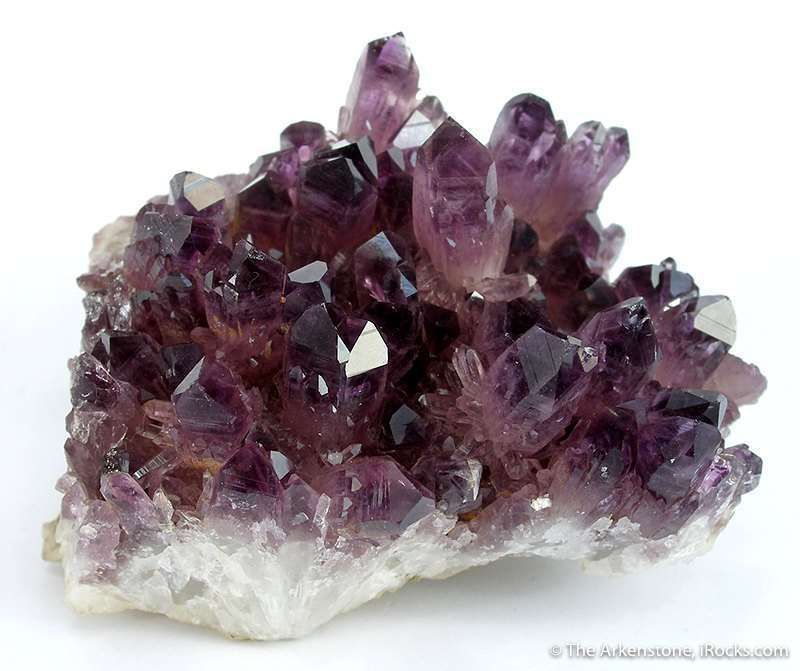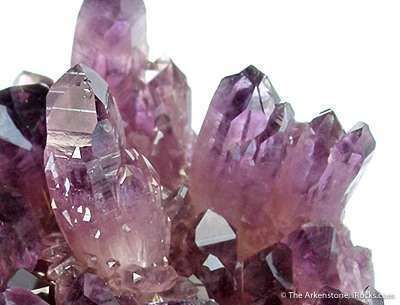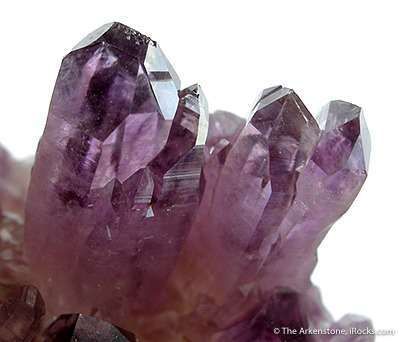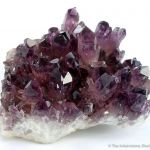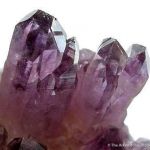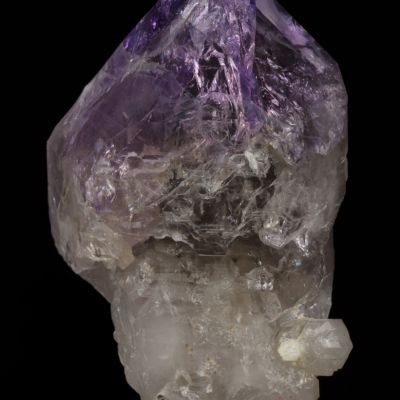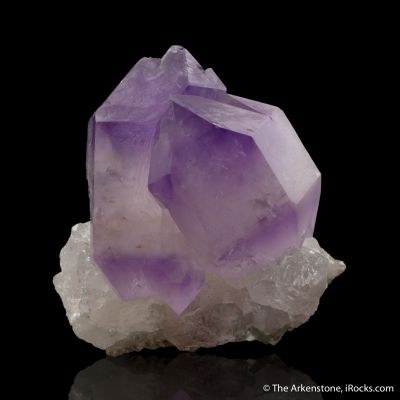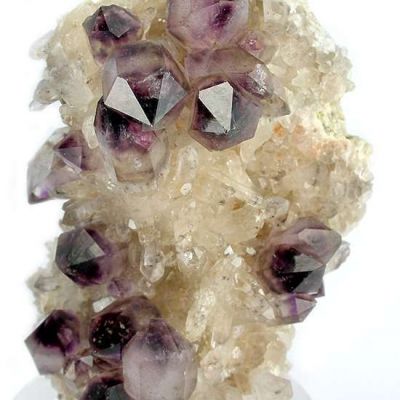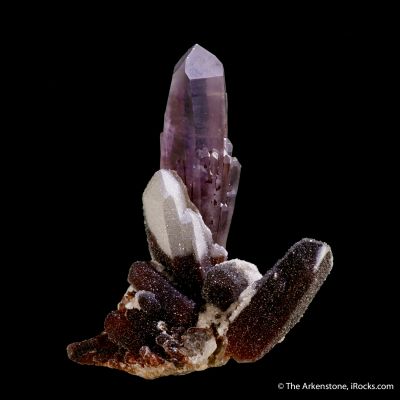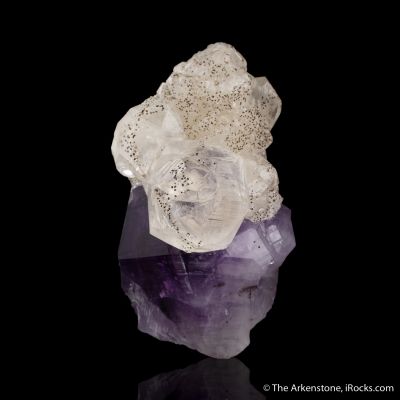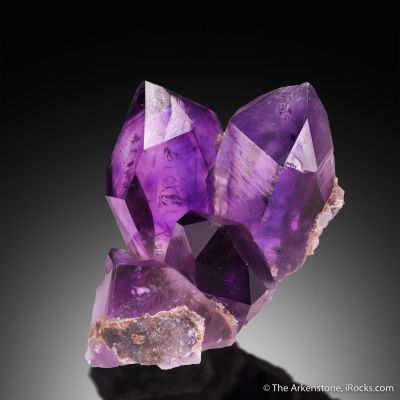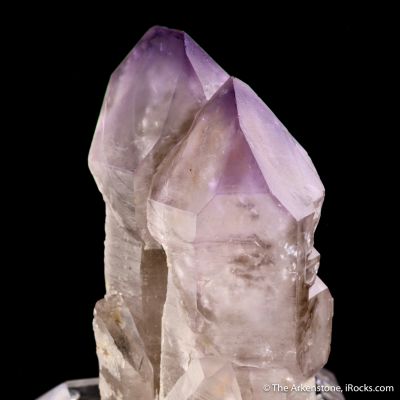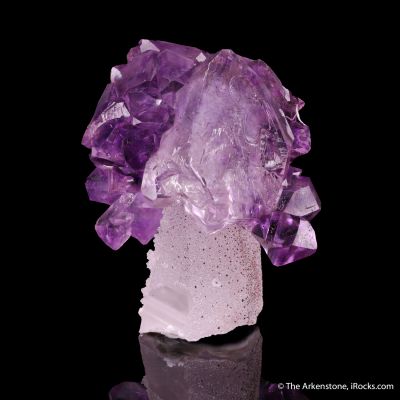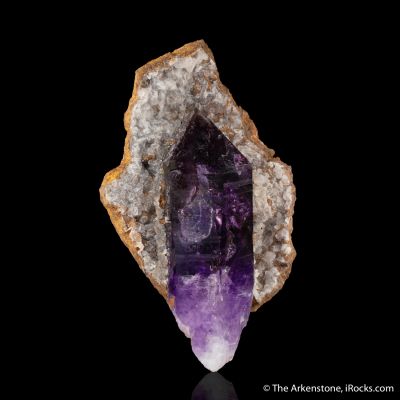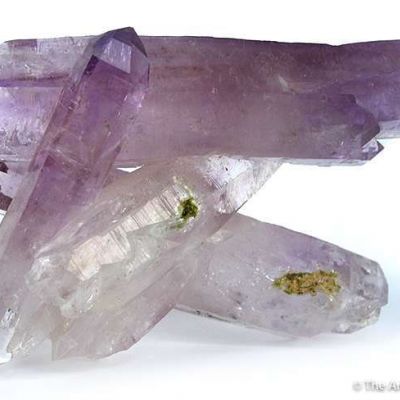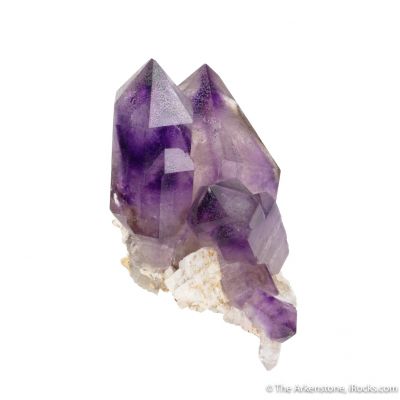- RHQTZ-01
- Amethyst
- Schemnitz, Slovakia
- Small Cabinet, 7.8 x 5.6 x 5.5 cm
- Ex. Smithsonian Institution; Richard Hauck; Clarence Bement
- SOLD
This specimen is a very important old classic for amethyst, and a scarcely seen item in even the most prominent old collections. It concists of a plate of white quartz on rock matrix, upon which are the most intensely purple gem crystals of amethyst you can imagine, to 2 cm. They sparkle like glass, and these are so treasured in Europe, that I have seen specimens of half this quality for more money, in euros no less, at Munich. This is, however, a really good example in that it is aesthetic, and not just representative. It is not prisitne, but is nearly so with only one break of consequence to a crystal and a few minor dings otherwise (and probably is 120-plus years old, so you should give a little leniency!). Consider that at one time these were the BEST purple amethyst crystals for the collector in the world, for overall quality, and a treasured few specimens commanded their weight in gold at the time. Before the discovery of the Mexican and Bolivian crystals, after all, where would you get such beautiful and intense amethyst of this quality? The last one I saw of this size and caliber, a similar specimen from the Ed David collection, was one for which he himself had paid more than the asking price here although they are not too dissimilar. Note an inked black arrow on the back of this specimen was made by the early-1900s AMNH curator Gratacap in curating the display specimens from the Bement collection after it was donated to the AMNH by financier JP Morgan, who purchased the collection after Bement's death. The arrow denotes the rear direction on the shelf on which the specimen was to be placed, thus showing its proper orientation on the display shelves of the museum. As the MinRecord archive states, Clarence Sweet Bement was one of the greatest mineral collectors of all time, from around 1866 to 1900 known for his high level of taste in specimens - even in the oddities, rarities, and classics. The man had, be they rare or pretty or ugly or common, the best of the era. Heck, if this were Mexican with such deep color, it would already be 2k anyhow...Click on this link to see a copy of the original early 1900s accession book from the American Museum archives: CLICK HERE
